 Western Digital (WD) is making quite a name for themselves in network attached storages (NAS). I reviewed last year’s My Cloud EX4, and this year, WD launched several new NAS models, including the My Cloud EX4100 I review here. The EX4100 is a four-bay NAS designed for prosumers and creative professionals.
Western Digital (WD) is making quite a name for themselves in network attached storages (NAS). I reviewed last year’s My Cloud EX4, and this year, WD launched several new NAS models, including the My Cloud EX4100 I review here. The EX4100 is a four-bay NAS designed for prosumers and creative professionals.
The My Cloud EX4100 review unit I have is fitted with four numbers of 6 TB WD RED drives. It’s a hefty powerhouse, and it’s weight is the first impression I get of the EX4100. You see, the shipping package weighs in at about 8 kg! Perhaps it’s not all that surprising if you consider the number of 6 TB hard disk drives contained within.
The My Cloud EX4100 comes with a few essential items to get you started, namely an Ethernet cable, power adapter and power cord.
The My Cloud EX4100 has two power inputs, but like the EX4 I reviewed previously, it comes with only one set of power adapter and power cord. The dual power inputs are nice to have for redundancy purposes, but a little disappointing that the second power adapter is not included.
Compared with the EX4, the My Cloud EX4100 is slightly bulkier. But otherwise, the front side is mostly similar. There is a two-line LCD screen, two arrow buttons, and a power button. The four drive bays are accessed from the front.
WD supplies the My Cloud EX4100 in several configurations:
- Without disks
- 2x 4 TB disks (8 TB)
- 4x 4 TB disks (16 TB)
- 4x 6 TB disks (24 TB)
If you’re thinking the 8 TB configuration comes with 4 numbers of 2 TB disks, unfortunately, that’s not the case. You have only two bays populated with 4 TB disks. The 16 TB and 24 TB configurations have all four bays populated.
The My Cloud EX4100 supports several RAID configurations, including RAID 0 (striped), RAID 1 (mirrored), RAID 5 (striped with distributed parity), and RAID 10 (striped and mirrored). Additionally, you can configure Spanning mode, where the disks are simply concatenated together to form one logical volume, and JBOD mode, where each disk simply remains as an independent disk volume. RAID 5 and RAID 10 will require all four drive bays to be used.
Performance on the My Cloud EX4100 is really impressive. I copied a file to the NAS at about 92 MB/s, and copied out of the NAS at about 99 MB/s. This is true in both spanning mode as well as in RAID 0 (striped). In RAID 5, the file copies achieved 79 MB/s writes and 99 MB/s reads. This is significantly improved, particularly in writing, compared with the EX4. I will separately post Bonnie++ benchmarks of this NAS at a later time. At this stage, I’m pretty much convinced the EX4100’s performance is pretty good.
The My Cloud EX4100’s web management interface is simple and easy to use. It hasn’t changed much from the EX4. The main dashboard shows you a summary of the NAS, as you can see in the above screenshot. This includes a breakdown of how the storage space is used, health status, and network activity.
Using the web management interface, you can configure users, shares, and how what sort of access rights each user has to the shares. The My Cloud EX4100 is really flexible. Apart from SMB, which is the standard Windows file sharing protocol, it also supports AFP, and can function as a Time Machine network destination. It can do UPnP, DLNA, and has a built-in iTunes server. There’s also a cloud access mechanism that enables your storage to be easily accessible from a mobile device anywhere on the Internet.
I personally don’t care so much about Windows Active Directory and Distributed File System support. However, I’m impressed with several enterprise-grade features such as the ability to present volumes on the EX4100 as an iSCSI-target, and support for iSCSI virtualisation which maps other iSCSI-targets onto the EX4100 to be presented to iSCSI initiators. The EX4100 also serves out NFSv3 and WebDAV.
Even a NAS with all sorts of redundancy features will need to have an external backup of some kind. To this end, the My Cloud EX4100 can perform scheduled backups of itself to an external USB device, to another My Cloud EX4100 over the network, or to a cloud-based backup provider like Amazon S3 or ElephantDrive.
On the back of the My Cloud EX4100, you’ll find two DC power input jacks, though only one power adapter is supplied as mentioned earlier, and two Gigabit Ethernet ports. The EX4100 supports aggregation, so you can use both ports to carry traffic simultaneously, while also providing for quickly failover in the case of link failure. Jumbo frames, VLAN, and IPv6 is also supported by the EX4100.
Apart from the two USB 3.0 ports on the back, there is one more USB 3.0 port on the front. The front port supports USB Direct Copy.
There’s actually not much more that you could want from the My Cloud EX4100. But there’s more. You can run apps on the EX4100. This is really very interesting. It is a lot more than just being able to run a long HTTP, FTP or BitTorrent download on the NAS itself. WD has added support for a couple of add-on apps. Apps like, say, WordPress, Joomla, or phpBB.
It actually almost seem natural that the My Cloud EX4100 can run these add-on apps. After all, it is a computer, albeit a tiny one, and it runs Linux. It already runs a web server, because that’s how you access the management interface. I’m not necessarily saying that the EX4100 is an excellent way to run WordPress. But it is something you could do.
These add-on apps are fairly new with WD, though in comparison with other NAS boxes, it’s still a very small list.
All things considered, the My Cloud EX4100 is a very capable prosumer NAS. It can do just about anything a prosumer could ask for. It’s performance is, overall, also pretty good, and certainly a marked improvement from the EX4.
The MSRP for My Cloud EX4100 is S$699 for the diskless unit, S$1,299 for 8 TB, S$1,799 for 16 TB and S$2,499 for 24 TB. The price sounds pretty good, considering other four-bay NAS boxes available.
Conclusion
The WD My Cloud EX4100 can do just about anything you could ask for in a prosumer NAS. It’s performance is also pretty impressive.
Pros:
- Good performance all-around
- Friendly management interface
- Plenty of features
- Supports many share/media/network protocols
Cons:
- Second power adapter not included
- Limited 3rd-party add-on apps
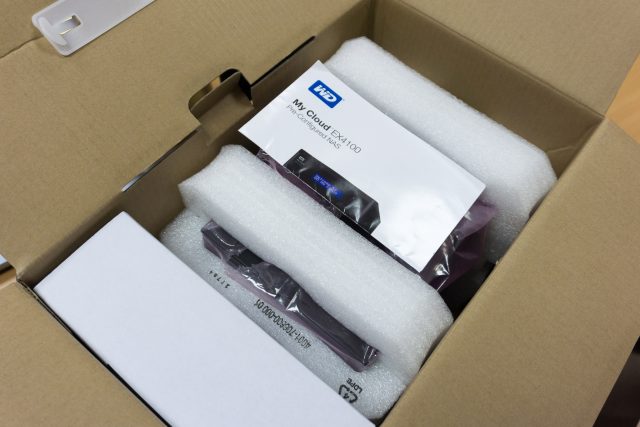
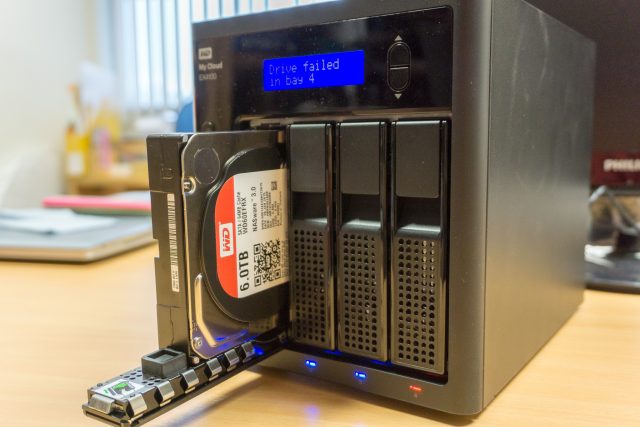
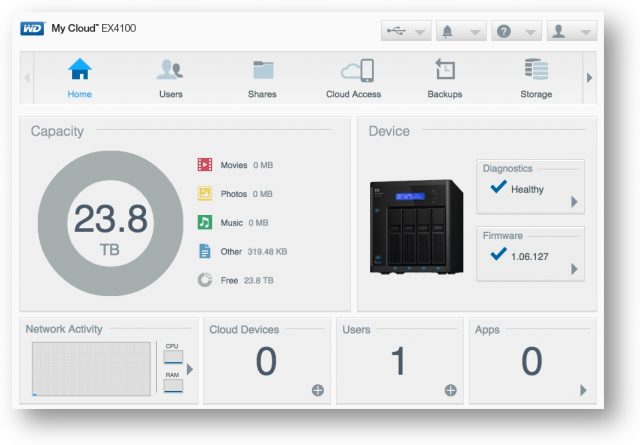
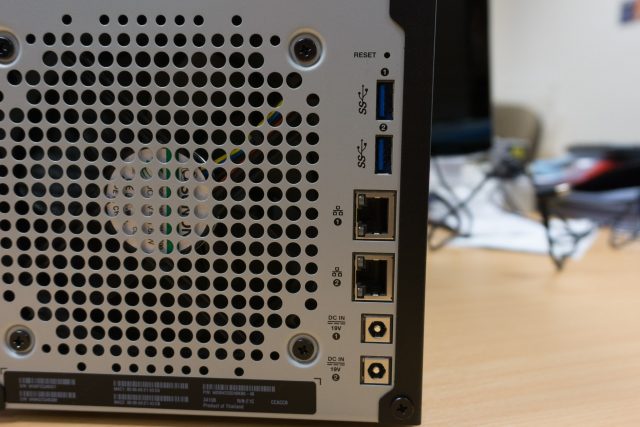
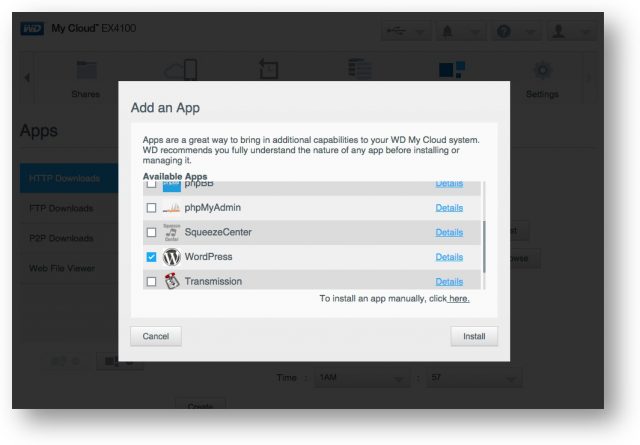
1 thought on “WD My Cloud EX4100 Review”
View Comment Policy